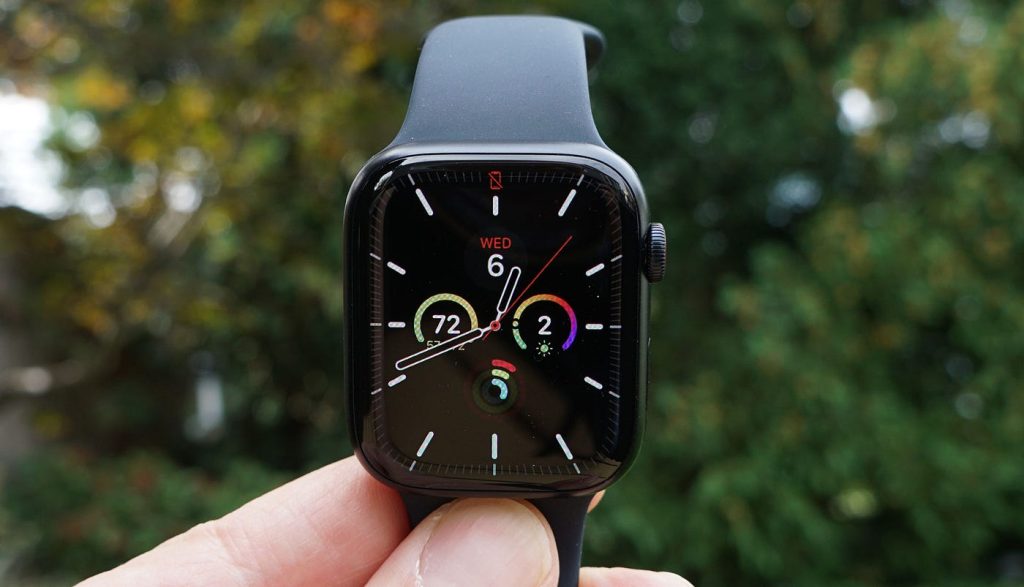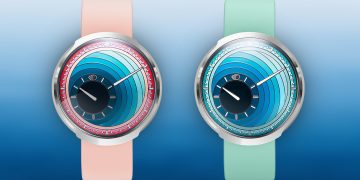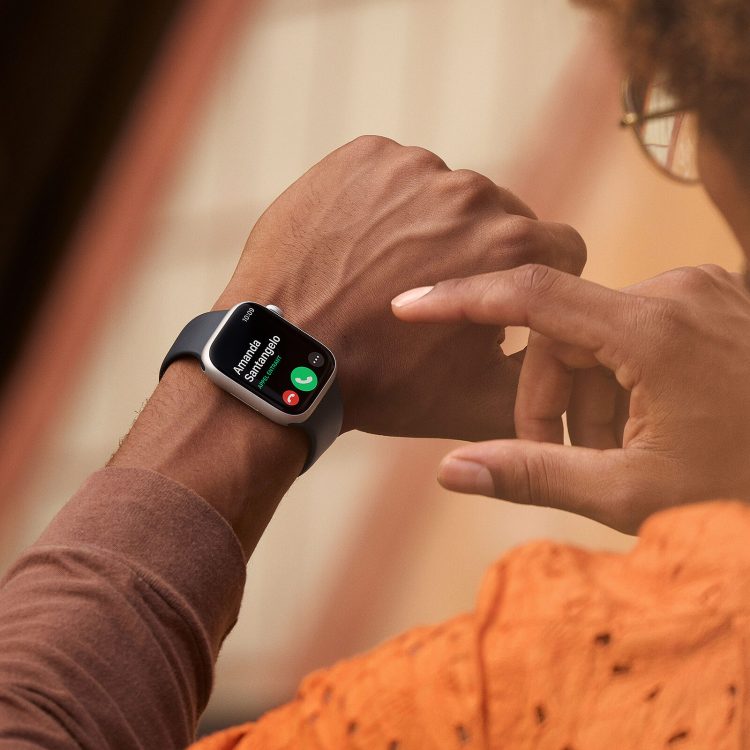Introduction: The Importance of Proper Maintenance for Your Apple Watch
The Apple Watch has become one of the most popular and advanced wearables in the market, offering an array of features from fitness tracking to seamless integration with iPhones and other Apple devices. However, like any electronic device, the Apple Watch requires proper maintenance and care to ensure its longevity and optimal performance. Whether you’re new to the Apple Watch or have been wearing it for years, taking good care of your device can prevent unnecessary repairs and prolong its life.
In this article, we will explore in detail the various aspects of Apple Watch maintenance, covering everything from battery life management to cleaning tips and hardware protection. Whether you own the Apple Watch Series, Apple Watch SE, or Apple Watch Ultra, these practices will ensure that your watch functions optimally for years to come.
1. Understanding the Apple Watch Components and Their Importance
Before delving into maintenance tips, it’s important to understand the key components of the Apple Watch and their significance:
a. The Apple Watch Display
The display is one of the most important and vulnerable components of the Apple Watch. Made from sapphire crystal (on higher-end models), ion-strengthened glass, or ceramic, the screen is designed for durability, but it can still be prone to scratches or cracks if not properly protected.
b. The Battery
The battery is another crucial component that requires regular attention. Apple claims that the Apple Watch battery should last 18 hours on a full charge under normal usage. However, the battery’s longevity can diminish over time, especially with overcharging or poor charging habits.
c. The Sensors
Apple Watches are equipped with a variety of sensors for tracking health data such as heart rate, ECG, blood oxygen levels, and sleep patterns. These sensors are crucial for health tracking, but they must be kept clean and free from dirt, sweat, and moisture to work effectively.
d. The Watch Band
The band is often an afterthought, but it’s an essential part of the watch’s design and comfort. Apple offers a wide variety of bands made from materials like leather, silicone, nylon, and stainless steel. Each material has specific care needs to ensure it remains in good condition.
2. Proper Apple Watch Battery Care and Maintenance
The battery is one of the most important parts of any wearable, and proper care will help extend its lifespan. Although the Apple Watch battery is designed to last up to 18 hours on a single charge, there are practices that can help maintain the battery’s health and longevity.
a. Charging Best Practices
- Avoid Overcharging: Overcharging your Apple Watch can damage the battery over time. Apple’s charging system is designed to stop charging once the battery reaches 100%, but it’s still a good idea to unplug the watch once it’s fully charged.
- Use the Right Charger: Always use the Apple-approved charger that came with your Apple Watch, as third-party chargers may not regulate charging power correctly.
- Keep Battery Between 20-80%: Some experts recommend keeping your watch’s battery between 20% and 80% for optimal battery health, as fully depleting the battery or keeping it at full charge all the time can reduce its lifespan.
b. Optimizing Battery Performance
- Low Power Mode: If you’re trying to extend battery life during long periods away from a charger, you can activate Low Power Mode to reduce the amount of power consumed by the device. This will turn off non-essential features like background app refresh and automatic sensor tracking.
- Turn Off Unused Features: If you’re not using features like GPS, Wi-Fi, or Bluetooth, turning them off can extend battery life.
c. Handling Extreme Temperatures
Battery performance can be affected by extreme temperatures, both hot and cold. Try to avoid exposing your Apple Watch to environments with temperatures below 32°F (0°C) or above 95°F (35°C), as extreme temperatures can affect the battery’s efficiency and longevity.
3. Cleaning and Maintaining Your Apple Watch for Longevity
Proper cleaning and care are essential to maintaining the Apple Watch’s appearance, performance, and functionality.
a. Cleaning the Display and Case
- Use a Soft, Lint-Free Cloth: Gently wipe the screen and case with a soft, lint-free cloth. Avoid using harsh chemicals like window cleaners, as they can damage the screen coating.
- Water Resistance Considerations: While Apple Watches are water-resistant (with varying levels depending on the model), it’s still a good idea to rinse the watch with clean water after using it in saltwater or chlorine, as these substances can affect the materials over time.
b. Cleaning the Sensors
Apple Watch models come with various sensors that monitor heart rate, blood oxygen, and ECG, among other features. These sensors can accumulate dirt, oil, and sweat, which can impair their ability to function properly.
- Use a Soft, Damp Cloth: Gently wipe the back of the watch, where the sensors are located, with a soft, damp cloth. Avoid using excessive moisture.
- Rinse After Workouts: After sweaty workouts or swimming, rinse the Apple Watch under fresh water to clean off any residue that might clog or damage the sensors.
c. Cleaning the Band
The band on your Apple Watch is one of the most personal parts of the device, and it’s important to clean it regularly to maintain both hygiene and aesthetics.
- Silicone and Nylon Bands: These bands are easy to clean. Simply wipe them down with a damp cloth. If necessary, you can use mild soap and water to remove stubborn dirt or sweat buildup.
- Leather Bands: Leather bands should be treated with care. Avoid submerging them in water. Use a soft cloth and, if needed, a gentle leather cleaner. Over time, leather bands may develop a patina, but excessive moisture can cause them to degrade.
- Stainless Steel Bands: Clean stainless steel bands with a soft cloth and, if needed, mild soapy water. Be careful with aggressive scrubbing, as it can cause scratches.

4. Apple Watch Software Maintenance: Keeping Your Device Updated
The watchOS operating system is constantly evolving, with Apple rolling out updates that improve performance, add new features, and fix bugs. Regular software updates are essential to ensure your Apple Watch runs smoothly.
a. How to Update Your Apple Watch
- Ensure Compatibility: First, make sure that your Apple Watch is compatible with the latest version of watchOS.
- Connect to Wi-Fi and Power: Make sure your Apple Watch is connected to Wi-Fi and is placed on its charger before initiating an update to avoid interruptions.
- Automatic Updates: To make life easier, you can set your Apple Watch to automatically update when a new version of watchOS is available. Go to Settings > General > Software Update and toggle on Automatic Updates.
b. Benefits of Regular Software Updates
- Bug Fixes: Software updates often fix bugs and glitches that could be affecting the performance of your watch.
- New Features: Apple continuously adds new features, including health tracking, watch faces, and app integrations, so keeping your watch updated ensures that you’re getting the best experience possible.
c. Managing Storage and Apps
Over time, your Apple Watch might accumulate apps, data, and files that can take up space and slow down performance.
- Clear Cache and Data: If certain apps aren’t functioning well or are taking up too much space, you can clear their cache or even uninstall them if not in use.
- Remove Unnecessary Apps: You can manage and remove apps directly from the Apple Watch or via the Watch app on your iPhone.
5. Protecting Your Apple Watch: Tips for Avoiding Damage
Even though Apple Watches are designed to be durable, accidents can happen. Here are some tips to protect your device:
a. Use a Screen Protector
While the sapphire crystal display is scratch-resistant, it’s not invincible. Using a screen protector can help guard against scratches, cracks, or scuffs.
b. Use a Case or Bumper
For extra protection, consider using a protective case or bumper around the edges of the watch. These accessories can shield the Apple Watch from scratches or damage if it accidentally hits a hard surface.
c. Avoid Impact and Extreme Conditions
Avoid dropping or exposing your Apple Watch to extreme conditions such as sharp objects, strong chemicals, or extreme temperatures that could damage its components.
6. Troubleshooting and Repairs: When to Seek Professional Help
Sometimes, despite best efforts, issues arise. Here’s when to seek professional help:
- Screen Cracks or Damage: If the screen is cracked or the display is malfunctioning, contact Apple support for a repair or replacement.
- Battery Issues: If your Apple Watch is no longer holding a charge or is draining quickly, a battery replacement might be necessary.
- Unresponsive Features: If the Apple Watch is unresponsive, freezing, or experiencing slow performance, a visit to an Apple Store or authorized service provider may be needed.
Conclusion: Extending the Life of Your Apple Watch
By following the proper maintenance and care guidelines, you can ensure that your Apple Watch continues to function at its best for years to come. Whether it’s managing battery life, cleaning the device, updating software, or protecting it from damage, taking the time to properly care for your Apple Watch can help it stay in peak condition, delivering optimal performance throughout its lifespan.
The Apple Watch is an investment in both technology and personal wellness, and by maintaining it with care, you’ll enjoy all the benefits it offers—health tracking, communication, and convenience—without worrying about wear and tear. Regular upkeep will also save you time and money on repairs, keeping your Apple Watch running smoothly and looking great.





































